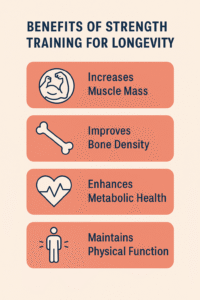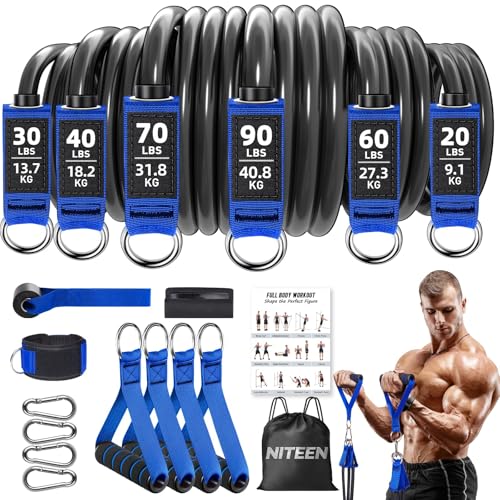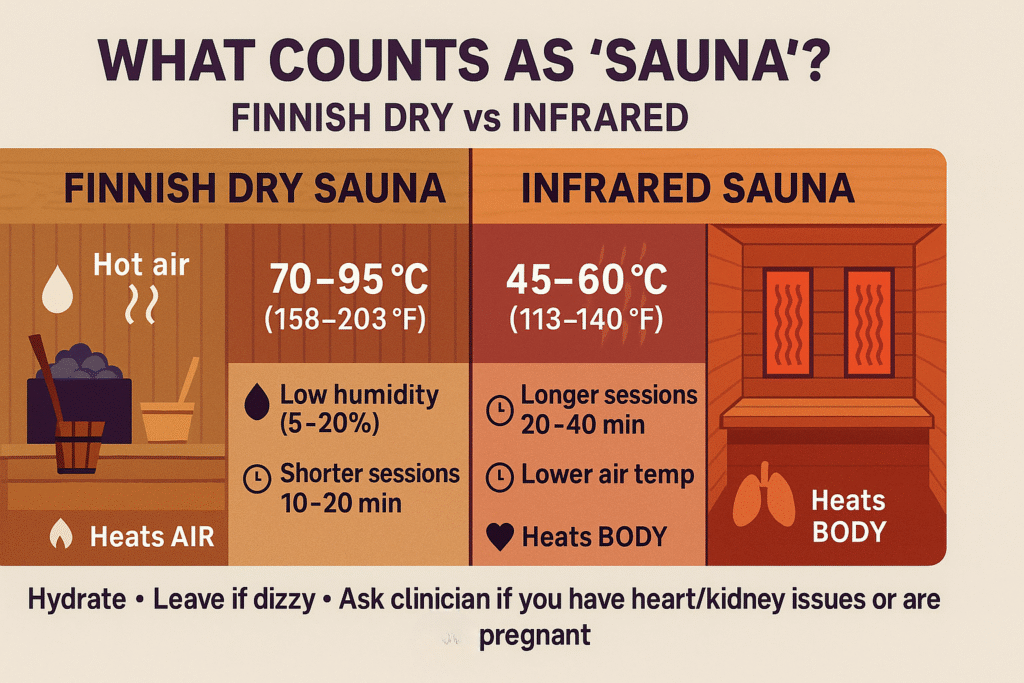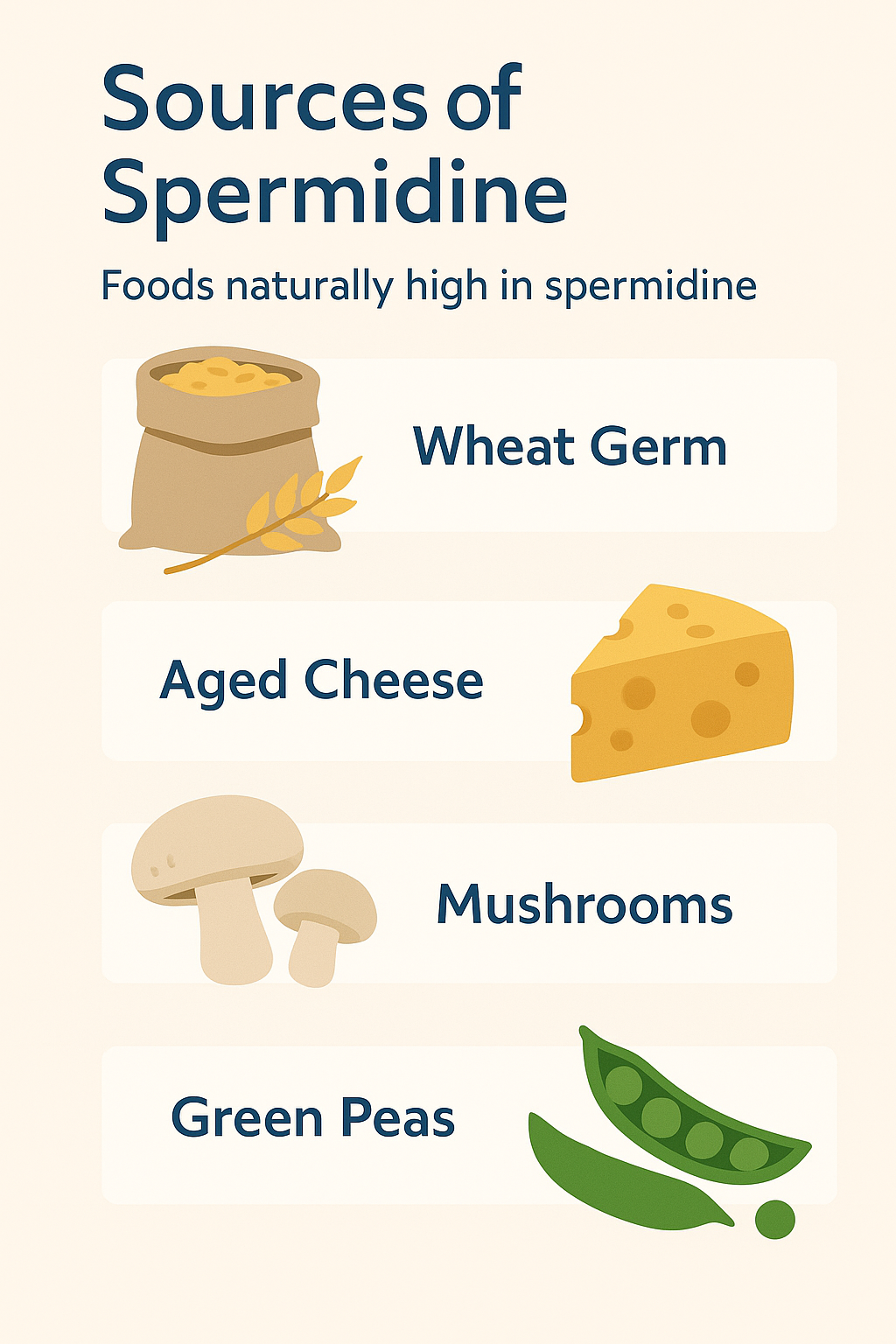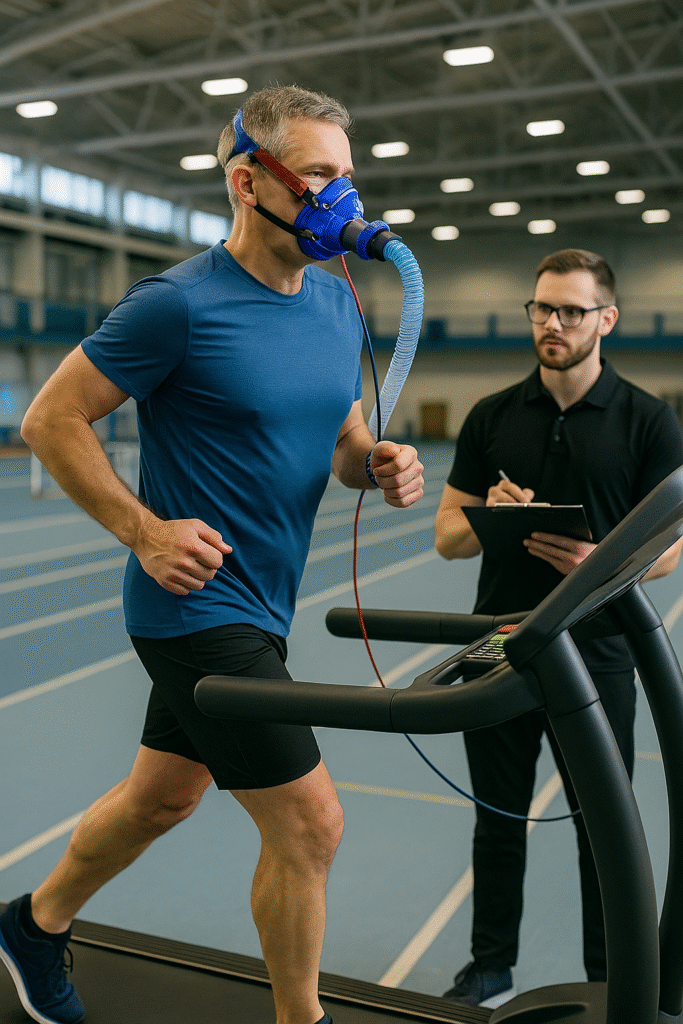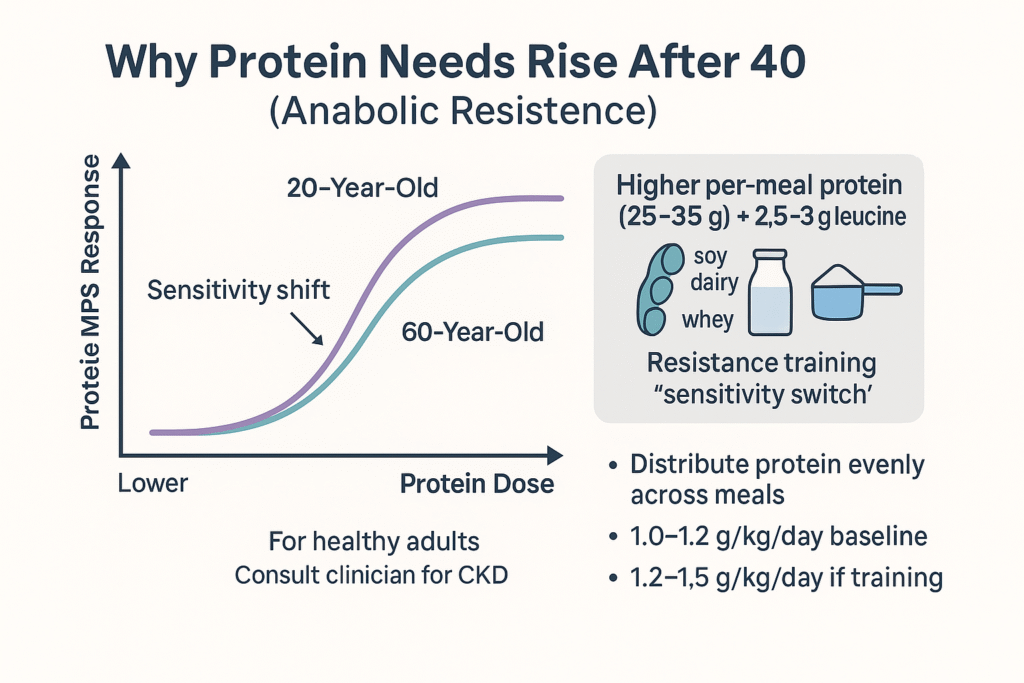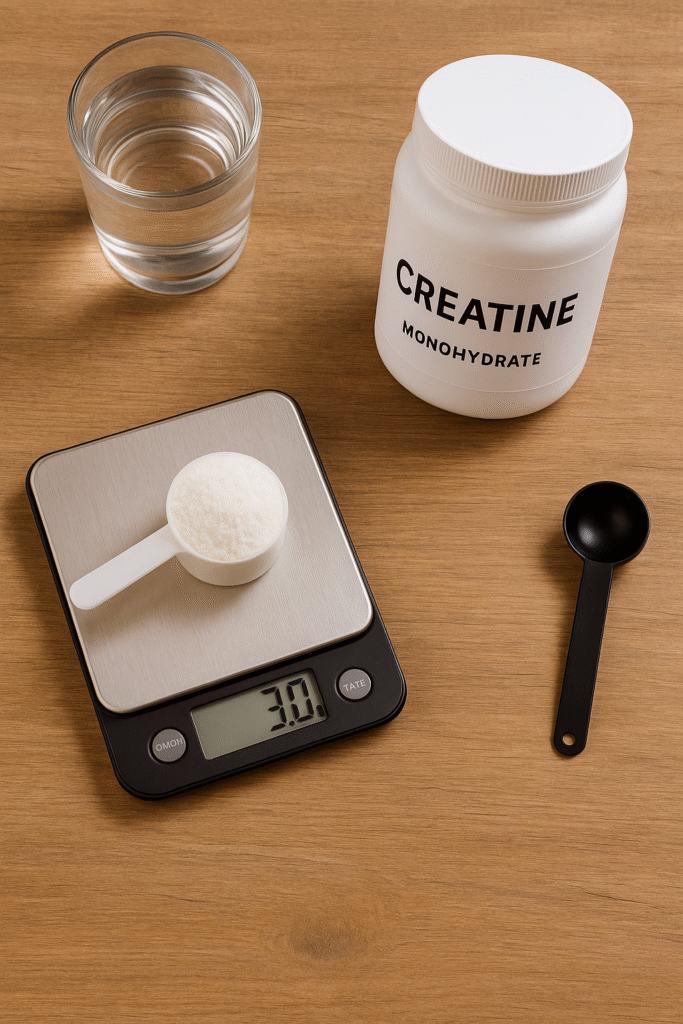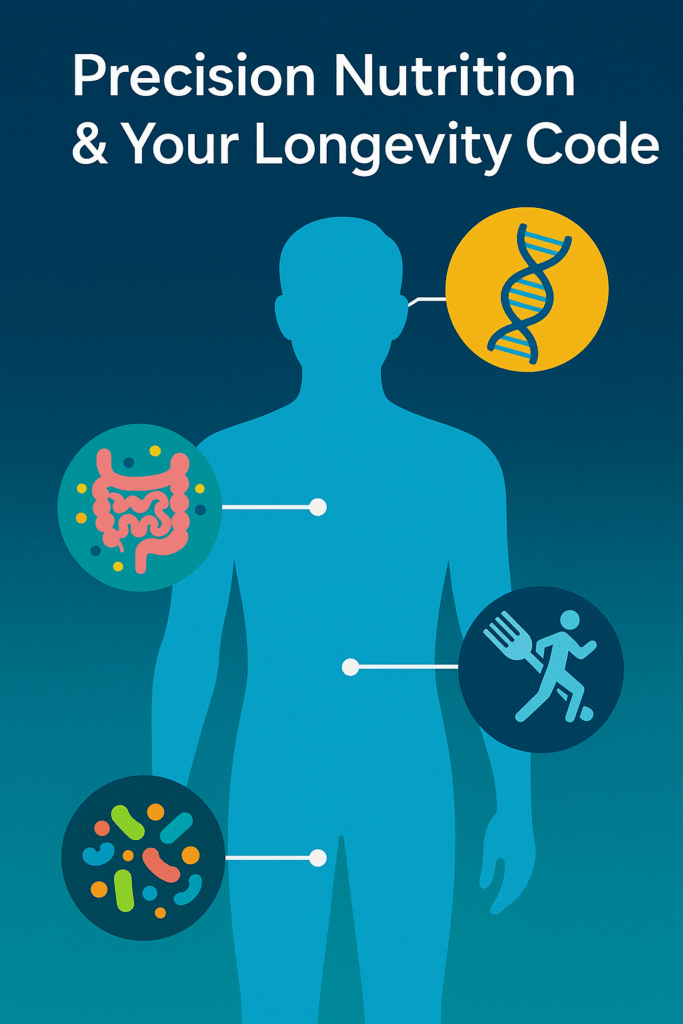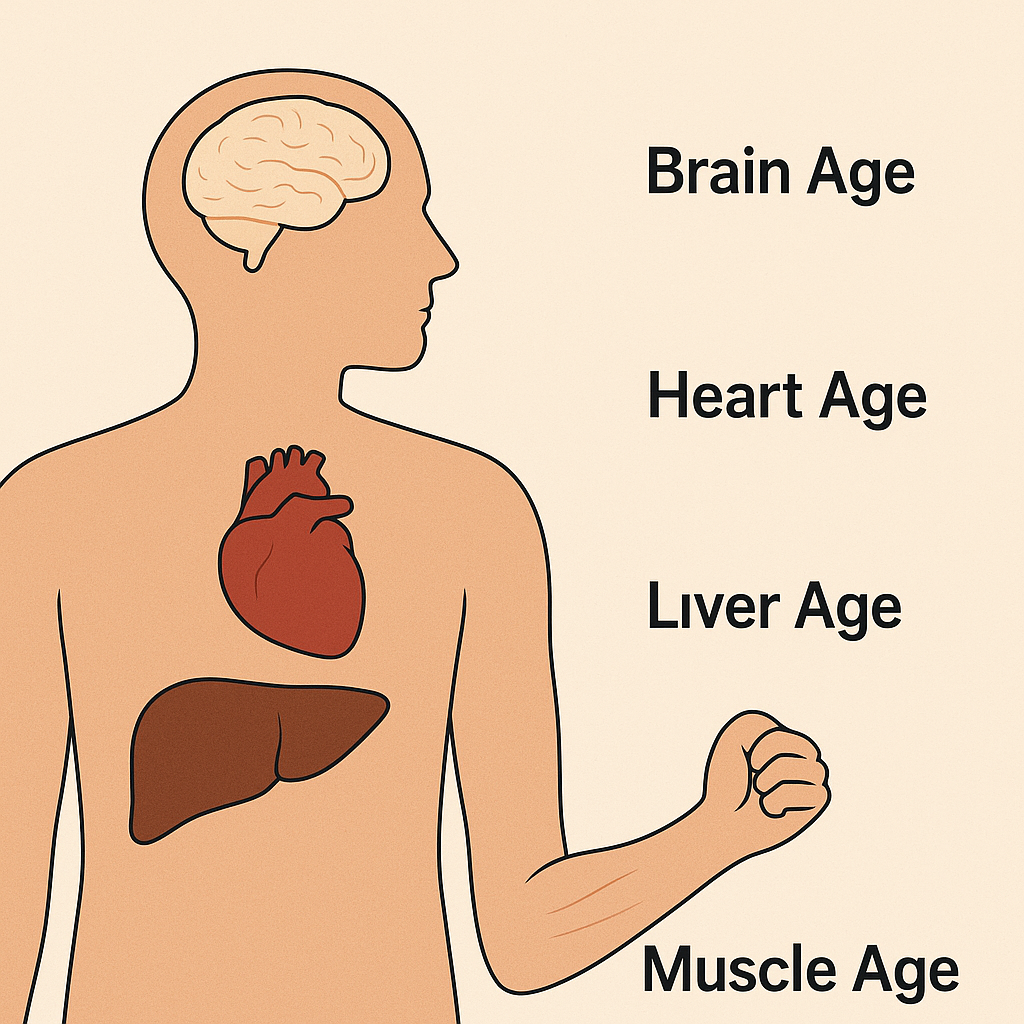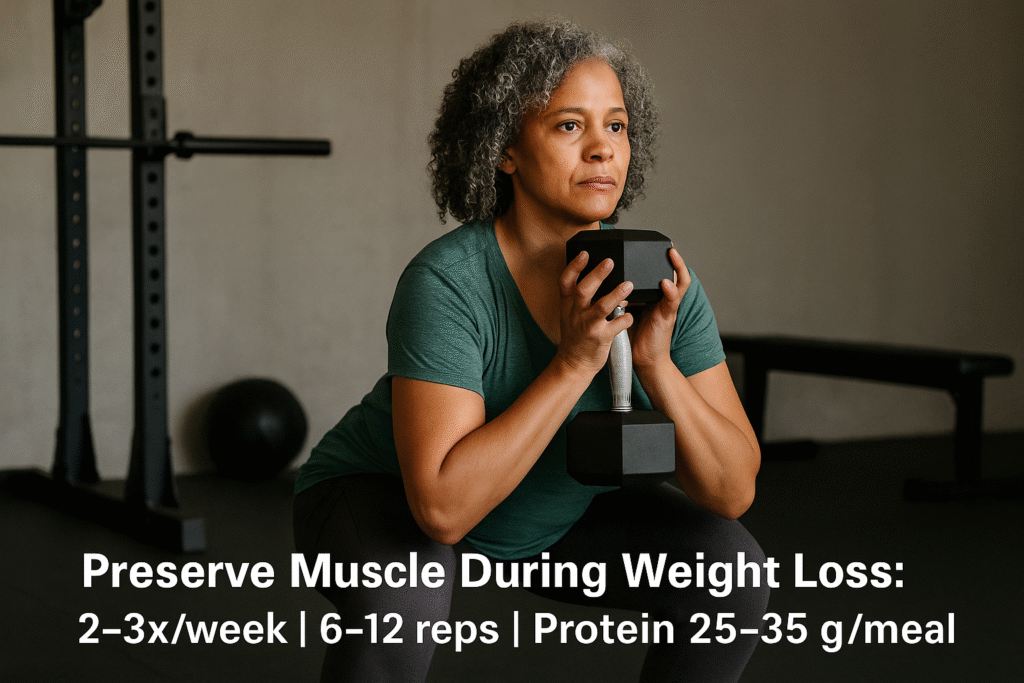Updated: October 21, 2025 | Estimated reading time: 9 minutes

Key Takeaways
Strength training (resistance/weight-lifting) is not just about muscle or aesthetics — it’s one of the most powerful tools to extend health-span and life-span, particularly after age 40. PubMed+3Harvard Health+3Penn State+3
Research shows older adults who lift weights at least twice a week reduce all-cause mortality, preserve muscle/bone strength, improve metabolic health, and maintain independence. Penn State+2Medical News Today+2
You don’t need to train like a bodybuilder—but you do need a consistent, progressive plan (2-4 sessions/week), solid form, and safe load progression to trigger benefits. The Independent+1
If you’re age 40+ and not doing any resistance work, it’s not too late—starting now can still reverse age-related muscle loss and improve outcomes. Mayo Clinic McPress+1
What It Is & Why It Matters 
Strength training (also called resistance training) means exercises that cause your muscles to contract against an external resistance—free weights, machines, resistance bands, body-weight, etc.
As you age, several changes occur: muscle mass declines (sarcopenia), bone density drops (osteopenia → osteoporosis), insulin sensitivity declines, mobility becomes challenged, and the risk of falls and frailty increases. Keeping Strong+1
By engaging in strength training, you signal the body that muscle and bone are still needed—thereby slowing or reversing those age-related losses. That means better physical function (getting up from a chair, climbing stairs, carrying groceries), better metabolic health (blood sugar, fat loss), stronger bones (less fracture risk), and ultimately, a longer, healthier life. PMC+2PubMed+2
The Science: What’s Supported vs. Emerging
Evidence-Backed Benefits
Older adults who hit resistance training at least twice weekly showed 46% lower odds of death (any cause) than those who didn’t, in one large cohort. Penn State
A systematic review found just 30–60 min/week of muscle-strengthening activity increased life expectancy by 10-17%. AARP
Research shows even those over age 70 can increase muscle fibre size and function when following a proper resistance program. Mayo Clinic McPress+1
A randomized trial (the LISA study) found one year of heavy resistance training helped older adults maintain leg strength up to four years later, compared to moderate exercise or no extra exercise. Medical News Today
Emerging Research & Future Potential
Studies are now linking strength training with brain benefits (neurometabolic changes), improved balance/coordination (fall risk reduction), and even telomere preservation (a marker of biological aging). The Independent+1
There’s growing interest in load-type, frequency, and volume thresholds that maximize longevity vs simply “lifting weights.” For example, heavy loads may give longer-term strength preservation effects. PubMed+1
How to Do It Safely & Effectively
Weekly Template (for age 40+)
| Days | Focus | Sample Load & Format |
|---|---|---|
| Monday | Full-body strength | 3 sets of 8-12 reps of major lifts |
| Wednesday | Upper-body + core | 2-3 sets, 10-15 reps |
| Friday or Saturday | Lower-body + balance/plyometric | 2-3 sets, 8-12 reps |
Sample Quick-Start Plan
| Exercise | Sets | Reps | Rest |
|---|---|---|---|
| Goblet Squat | 2 | 12–15 | 60 s |
| Romanian Deadlift (dumbbell) | 2 | 12–15 | 60 s |
| Dumbbell Overhead Press (or push-up) | 2 | 12–15 | 60 s |
| Single-arm Dumbbell Row | 2 | 12–15 | 60 s |
Key Training Principles
Progressive Overload: Gradually increase weight, reps, or sets. The body must face increasing challenge to adapt. Wikipedia+1
Proper Form: Especially after 40, your joints, tendons, and mobility may limit form. Focus on technique rather than ego-lifting.
Frequency vs Volume: Two well-designed sessions/week can yield major benefits; more isn’t always better unless recovery is solid. The Independent
Rest and Recovery: Allow 48 hours between full-body sessions. Sleep, nutrition, and mobility work matter.
Load Selection: Doesn’t always require heavy barbells. Dumbbells, bands, and machines work—as long as there’s effort and stimulus.
Common Mistakes to Avoid
Jumping into heavy loads without assessing form or mobility → higher injury risk.
Focusing only on “muscle pump” or isolation movements; neglecting compound lifts (squats, deadlifts, presses) that yield best functional transfer.
Doing strength training but ignoring recovery (sleep, protein, hydration, mobility) → undermines gains.
Viewing strength training as “optional cardio” rather than a core pillar of health-span after 40.
Who Should Avoid It or Modify It
Most healthy adults can begin strength training with proper supervision or programming. However, modifications are advised for:
Individuals with unstable cardiovascular conditions, uncontrolled hypertension, recent surgeries, or severe joint disease—consult your physician first.
Beginners over age 40: start with body-weight or light resistance, focus on form and mobility before adding heavy loads.
Those with osteoporosis or vertebral fractures: avoid heavy spinal loading until cleared by a specialist; focus on machine-based lifts and balance/stability work.
Anyone new to lifting after many years of inactivity: consider a professional coach or physical therapist to assess movement quality.
Product & Equipment Recommendations
| Equipment | Why It’s Useful | Key Benefit |
|---|---|---|
| Adjustable Dumbbells | Versatility at home | Enables full-body lifts, saves space |
| Resistance Bands (Light-Heavy) | Good for warm-up & rehab | Improves mobility, adds load safely |
| Flat/Incline Bench | Supports pressing and pulling | Improves upper body access and variation |
| Barbell + Plates (for those comfortable) | Maximize strength gains via classic lifts | Higher ceiling for progression |
| Adjustable Power Rack | Safety and scalability | Enables heavy squats, pulls, and safety features |
Tip: Prioritize durability and adjustability for long-term investment.
Expert Insight & My Perspective
As the founder of Marquee Vitality, I’ve experienced firsthand the power of strength training—not just for performance, but for vitality. After turning 40 and transitioning from a high-stress lifestyle, I made resistance training in the gym and outdoors my non-negotiable 3x/wk as a requirement. The payoff wasn’t only in the mirror—it was in better sleep, sharper recovery, stronger joints, and a mindset shift: aging on my terms with purpose and freedom.
My advice: treat your body like the long-haul asset it is. Think 10-, 20-, 30-year runway, not just next summer’s look. When you lift, you’re not chasing a “small waist” or “toned arms”—you’re investing in mobility at 80, independence at 90, and resilience beyond 100.
FAQ
Q1: How much strength training do I need per week for longevity benefits?
Research suggests as little as 2 days/week of resistance training yields meaningful benefits. For instance, meeting guidelines of twice weekly was associated with lower mortality. Penn State+1
Q2: At age 55/60/70, is it too late to start?
Not at all. Even adults in their 70s show improvements in muscle fibre size and function when they begin resistance training. Mayo Clinic McPress+1
Q3: Should I still do cardio if I’m focusing on strength training?
Yes—the ideal model is both. Strength training covers muscle/bone/metabolic health; aerobic training covers cardiovascular health. Together they yield maximal lifespan benefit. For example, a study found adding strength training to aerobic exercise improved longevity in older adults. Harvard Health
Q4: What about injury risk?
When done with proper form, progression, and recovery, risk is low—even for older beginners. To reduce risk: start with supervised or guided sessions, use machines/bands initially, and prioritise mobility/warm-up.
Q5: How soon will I see results?
Within 8–12 weeks you’ll notice better strength, balance, energy, possibly body-composition change. Longer term (12–48 months) you’ll preserve muscle mass, strength, and independence, which are strongly tied to longevity outcomes. Medical News Today
Related Reads & Internal Links
“VO₂max Training for Longevity” — how combining aerobic + strength lifts lifespan.
“NAD⁺ and Cellular Energy After 40” — support for strength recovery and mitochondrial health.
“Retinol, Niacinamide & Skin Aging” — integrating strength training into a full-body vitality plan.
“Muscle Mass, Metabolism & Mid-Life” — dive into how lean mass influences insulin sensitivity and fat gain.
Conclusion
Strength training is more than a fitness habit—it’s a long-term investment in your biological future. Every rep you lift signals your body to stay young, to keep building and repairing instead of breaking down. As research continues to affirm, strength isn’t just muscle—it’s metabolism, cognition, immunity, and resilience rolled into one. When you commit to it, you’re training your cells, your joints, and your mindset to thrive in later decades.
From my own journey, I’ve learned that aging doesn’t have to mean decline; it can mean refinement. I’ve watched peers lose vitality because they stopped challenging their bodies—while others, who lift consistently, look and move like they’re a decade younger. Whether you start with push-ups or deadlifts, consistency and challenging yourself is the superpower. Strength training gives back more than it takes—power, confidence, and longevity. The time to build your future strength is today.
Disclaimer: All the content on this site is for informational purposes only, does not constitute medical advice, and does not establish any kind of patient-client relationship by your use of this website. I am not a health care professional. The information, including but not limited to text, graphics, images and other material contained on this website are for informational purposes only. No material on this site is intended to be a substitute for professional medical advice, diagnosis, or treatment. Before starting any new regimen, supplement, diet, or program, it is crucial to consult with a healthcare professional to ensure it is safe and suitable for your individual health needs and circumstances. Here’s a little transparency: This website also contains affiliate links. This means if you click and make a purchase, we may receive a small commission. Don’t worry, there’s no extra cost to you. It’s a simple way you can support our mission to bring you quality content.



